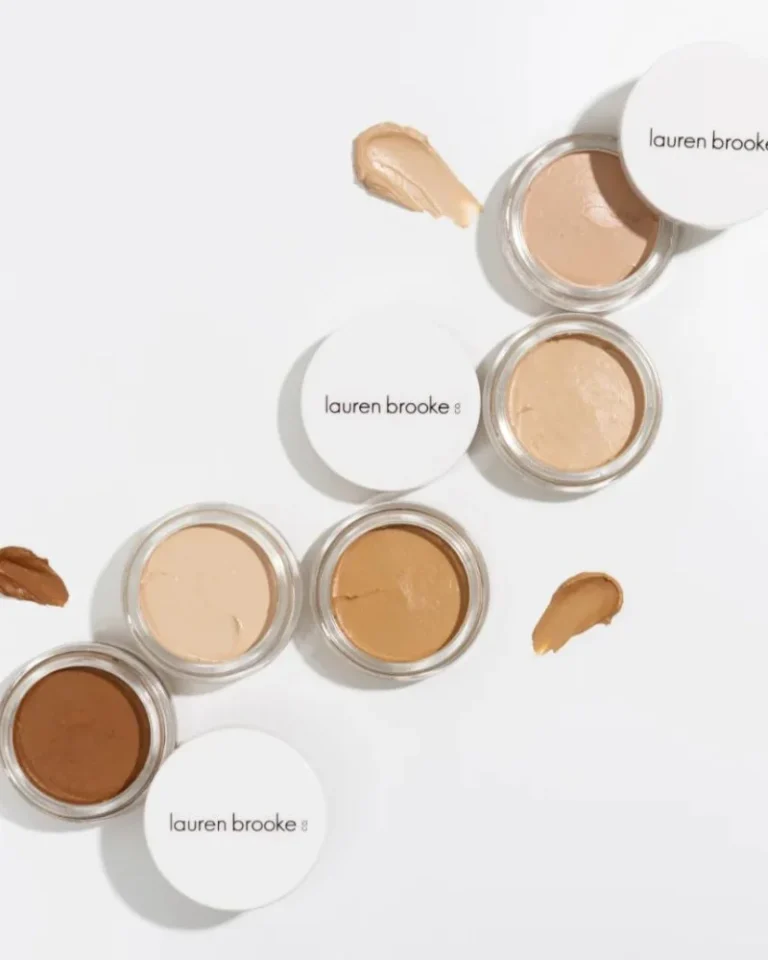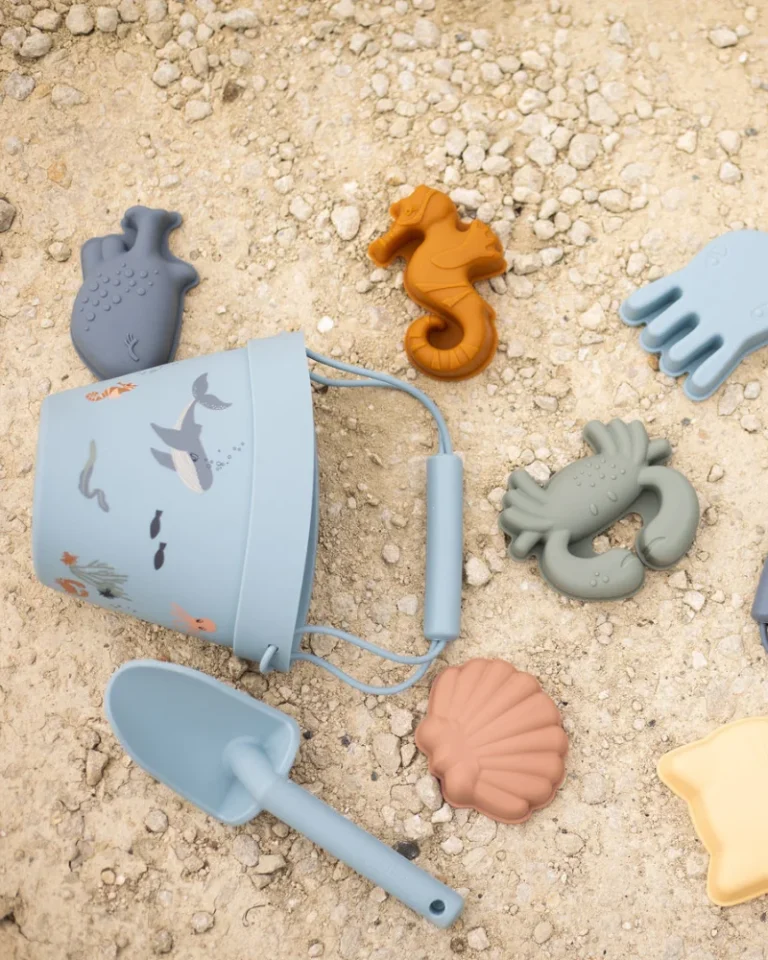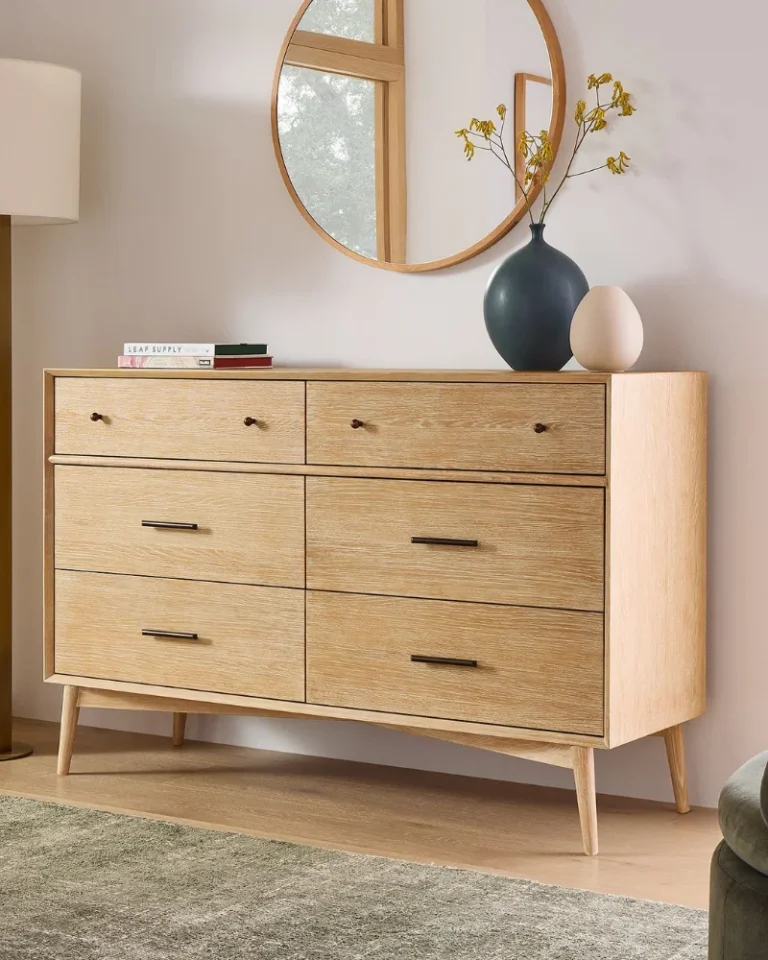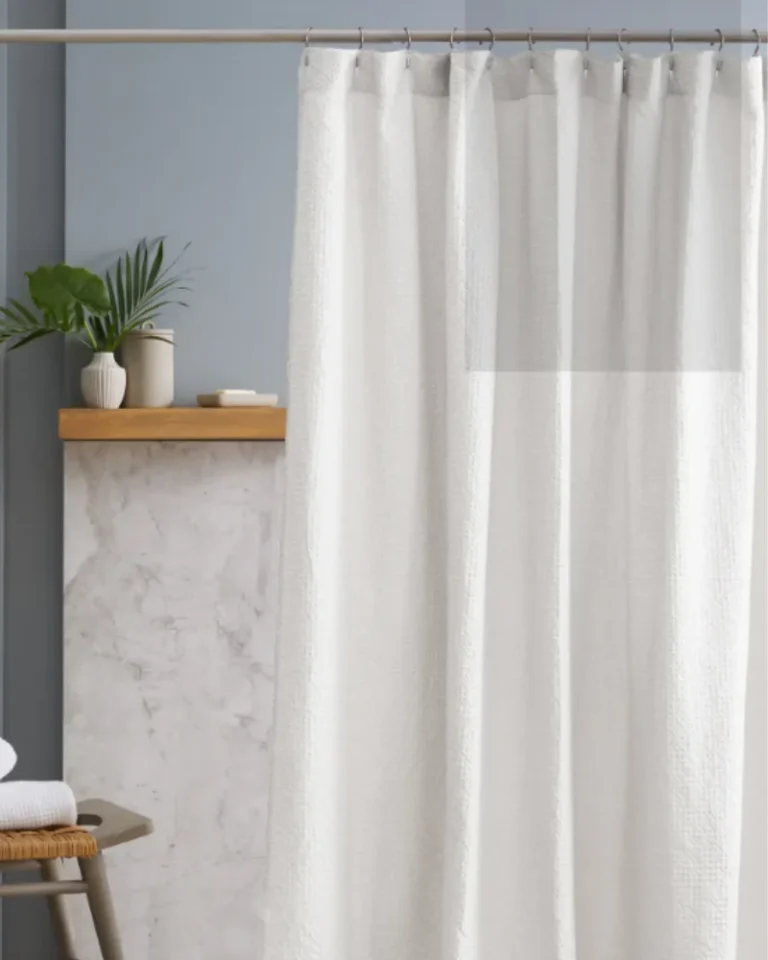This post may contain affiliate links. By browsing this website, you agree to our disclaimer, privacy policy, and terms of use.
Are you curious about using safer cleaning products in your home but aren’t quite sure where to begin? This guide to the best non-toxic household cleaning tips is for you!
The THC team of experts has compiled all of our best non-toxic household cleaning tips in one place, sharing our secrets on how we keep our homes spotless without using any harsh cleaning chemicals.
It’s a beautiful Saturday morning, and you’re ready to tackle your weekly cleaning routine. You gather your supplies that promise to make your home sparkle and get to work. But as you scrub, the fumes start to make your eyes water and your head spin. Suddenly, you’re not feeling so great.
Has this ever happened to you? If so, you’re not alone!
Not long ago, we thought the only way to clean our homes was to use those store-bought cleaners with a laundry list of toxic chemicals that claimed to obliterate dirt, grime, and germs.
But when we started to examine the ingredient lists more closely, we realized they were loaded with scary ingredients that could cause horrible side effects.
No wonder we felt awful every time we cleaned the house!
We knew we had to make a change, and fast. So we started researching natural cleaning products, experimenting with DIY cleaning recipes, and swapping out our old, conventional products for eco-friendly alternatives.
And you know what? Our homes have never looked better, and we haven’t had a single headache since!
However, we know that making the switch to non-toxic household cleaning products isn’t easy. And you might be wondering if homemade cleaning products can really be as effective as store-bought options.
That’s why our THC team has put together this guide of our favorite tried-and-true non toxic household cleaning tips to help you discover the best ways to keep your home perfectly clean without any harsh chemicals.
So, if you’re ready to throw out the toxic chemicals and embrace a cleaner, greener way of life, you’ve come to the right place. Let’s get cleaning!
The Best Non-Toxic Household Cleaning Tips:
1. Lemon and Salt for Wooden Cutting Boards
This dynamic duo works wonders on wooden cutting boards. The lemon’s acidity removes stains and odors, while the salt provides gentle scrubbing power. Just sprinkle coarse salt on the board, scrub with a lemon half, let sit for 5-10 minutes, then rinse. Your cutting board will look brand new!
Tips:
- For deeper stains or odors, let the lemon and salt mixture sit on the board for 5-10 minutes.
- Allow your cutting board to dry completely before storing. Do not soak your wooden cutting boards.
- After the board is dry, you might consider conditioning it with a food-safe oil to keep the wood from drying out and cracking.
2. Tea Tree Oil Mold Remover
Tea tree oil is a potent natural fungicide that can tackle mold and mildew. Mix 1 tsp of tea tree oil with 1 cup of water in a spray bottle, apply to moldy areas, let dry, and wipe away. The strong smell will dissipate within a few days. But keep it away from kids and pets, as it can be toxic if ingested.
This method works best for small areas of mold or routine preventive maintenance. Do you have a bigger mold problem or hard-to-reach spots? You might need to call in the pros.
Tips:
- Do not rinse. Allow the solution to dry on the surface. The strong smell will dissipate within a few days.
- For stubborn mold, you might need to repeat the application a few times.
- While tea tree oil is natural, its strong scent can be overwhelming in enclosed spaces. Ensure the area is well-ventilated during and after application.
3 . Olive Oil for Stainless Steel
Olive oil isn’t just for cooking. It’s also fantastic for polishing and maintaining stainless steel appliances! Apply a small amount to a microfiber cloth, rub in the direction of the grain, then buff with a clean cloth. Your stainless steel will shine like new.
I know what you’re thinking, “Oil on my stainless steel? Won’t that make it greasy?” But trust us, a little bit of olive oil goes a long way. It acts as a moisturizer for the metal, helping to repel fingerprints, smudges, and dust.
Plus, it leaves behind a beautiful, streak-free shine that’ll make your appliances look like they just rolled out of the showroom.
Tips:
- Use sparingly. A little olive oil goes a long way. Using too much can leave the surface feeling greasy.
- Regularly wiping down your stainless steel with olive oil can keep it looking newer for longer.
- While olive oil is readily available and effective, other light oils can also be used.
4. Cornstarch for Carpet Stains
Cornstarch is a natural, safe, and effective remedy for treating various carpet stains, including greasy spills and mud. Apply it directly to oily stains, let it sit, and then vacuum. For wet stains, make a paste with water, apply it, let it dry, then scrape and vacuum. It’s like magic!
The secret to cornstarch’s stain-fighting superpower? Its ability to absorb liquids and oils, pulling the stain right out of the carpet fibers.
Tips:
- The sooner you treat a stain, the easier it will be to remove.
- Before applying cornstarch to any stain, especially on colored carpets, test it on a small, inconspicuous area to ensure it doesn’t affect the carpet’s color or texture.
- If the stain is fresh, blot it with a clean, dry cloth before applying cornstarch to avoid pushing the stain deeper into the carpet fibers.
5. Chalk for Grease Stains on Clothes
Rub white chalk onto grease stains, covering them completely. Let it sit for 10 minutes or longer, then brush off and launder as usual. The chalk’s powdery texture absorbs the grease, making it easier to wash out. This method works best when applied ASAP after the stain occurs.
So, what’s the secret behind chalk’s grease-fighting powers? It’s all thanks to calcium carbonate, the main component of chalk. It absorbs grease like a sponge.
Tips:
- Before applying chalk, especially on colored fabrics, test it on an inconspicuous area to ensure it doesn’t affect the fabric’s color.
- If you don’t have chalk on hand, other absorbent powders like cornstarch or baking soda can work.
- For stubborn stains, consider pretreating the stain with a little bit of concentrated laundry detergent after using chalk and before washing.
6. Hydrogen Peroxide for Grout Cleaning
Hydrogen peroxide is amazing at cleaning stubborn, stained grout. Its bubbling action lifts and removes stains easily. Plus, it’s got some serious bacteria-busting powers, helping to kill off any mold or mildew lurking in those hard-to-reach corners.
Just make a paste with hydrogen peroxide and baking soda, apply it to the grout, let sit for 10-30 minutes, then scrub and rinse.
Tips:
- Consider applying this treatment as part of your regular cleaning routine to keep your grout looking clean.
- While hydrogen peroxide is generally safe for most grout, it’s a good idea to test it on a small, inconspicuous area first to ensure it doesn’t cause any discoloration, especially on colored grout.
- To minimize future grout staining and mold growth, ensure your bathroom or kitchen is well-ventilated. Use a squeegee or towel to wipe down tiles and grout after showers to reduce moisture.
7. Toothpaste for Water Stains on Wood
Who knew your trusty tube of toothpaste could do more than just keep your pearly whites sparkling? Turns out, it’s also a handy trick for tackling those annoying water stains on your wood furniture.
Apply non-gel white toothpaste to water stains, gently buff with a soft cloth, wipe clean, then dry. The mild abrasive properties of toothpaste help to gently buff out the stains without damaging the wood. This method is best suited for light to moderate water stains.
Tips:
- Always test the toothpaste on an inconspicuous area of the wood first to ensure it doesn’t damage the finish or alter the color.
- If the water stain has penetrated deeper into the wood, more professional methods may be required, such as sanding or refinishing.
- To protect the wood from future water stains, consider applying a coat of furniture polish or wax after cleaning.
8. Coffee Grounds for Fridge Deodorizer
If you’re a coffee lover like us, you probably go through a lot of coffee grounds. But don’t toss them in the trash just yet – they’ve got a second life as a fantastic fridge deodorizer!
Coffee grounds are like little odor-absorbing sponges, thanks to the nitrogen they contain. They trap and eliminate those funky fridge smells rather than just covering them up.
Place dry coffee grounds in an open container in the fridge and replace every 2 weeks for lasting freshness.
Tips:
- If you’re concerned about the coffee grounds spilling, you can cover the container with a thin piece of cloth or paper towel. This allows the grounds to still absorb odors while keeping them contained.
- If you use fresh grounds, consider first using them to brew coffee, then drying them for odor absorption. This way, you get the most out of your coffee grounds before repurposing them as a deodorizer.
- After using the coffee grounds as a deodorizer, they can be composted.
9. Denture Tablets for Toilet Cleaning
Now, I know what you’re thinking, “Denture tablets? In my toilet? No way!” But hear us out! These little tablets are the secret to a perfectly clean toilet bowl.
Designed to remove stains and kill bacteria on dentures, they work just as well on toilet bowl stains, including those pesky hard water marks. No need for harsh chemicals or elbow grease.
Drop 2-4 tablets into the toilet bowl, let sit for 20-30 minutes. Scrub with a toilet brush if needed, then flush.
Tips:
- Using denture tablets for toilet cleaning can be part of your regular bathroom maintenance routine. Doing this once a week can help prevent stain buildup and keep your toilet fresh.
- While denture tablets are generally safe, it’s a good idea to keep the bathroom ventilated during the cleaning process and avoid mixing them with other cleaning chemicals to prevent any potential reactions.
- Beyond toilets, denture tablets can be used to clean other areas and items in your home. Use them for stained cups, mineral buildup on faucets, and even jewelry.
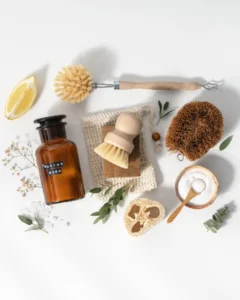
10. White Vinegar for Shower Head Buildup
Have you ever taken a good, hard look at your shower head? Has it become a crusty, calcified mess? Then this tip is for you. White vinegar makes quick work of removing mineral buildup and limescale, thanks to its awesome acidic powers.
Simply fill a plastic bag with white vinegar, secure it over your showerhead (a rubber band works great for this), and let it soak for an hour or two. The vinegar will work its magic, breaking down all the gross buildup. After soaking, remove the bag, give the showerhead a quick scrub (if needed), and rinse. Viola! Your showerhead will look and work like new.
Tips:
- Regularly cleaning your showerhead with vinegar can prevent mineral buildup and keep the water flow unobstructed.
- While vinegar is safe for most showerhead materials, if you have a showerhead with special finishes (e.g., oil-rubbed bronze, brushed nickel), it’s a good idea to check the manufacturer’s care instructions to avoid any potential damage from the acid in the vinegar.
- For showerheads that are heavily clogged, consider removing them from the shower arm for a more thorough soak in a bowl of vinegar.
11. Banana Peel for Dusting Plants
Using banana peels to dust houseplants is probably one of the craziest cleaning hacks we’ve tried. This eco-friendly method not only cleans the leaves but also provides them with nutrients.
Just gently wipe plant leaves with the inside of a banana peel, then remove the residue with a soft cloth.
The natural oils in banana peels can help remove dust and add a shine to the leaves, while their potassium can benefit your plants’ overall health.
Using banana peels for dusting plants is a sustainable way to reuse kitchen waste while caring for your indoor garden.
Tips:
- This method works best on plants with broad, sturdy leaves, such as pothos, philodendrons, and rubber plants.
- It’s not necessary to dust with banana peels every time; once every few weeks or as needed should suffice.
- After dusting, you can bury small pieces of banana peel in the soil near your plants to slowly release nutrients as they decompose. However, do this sparingly to avoid attracting pests.
12. Baking Soda Oven Cleaner
Oven cleaning spray is one of the most toxic chemicals in your kitchen. But we bet you never thought that humble old baking soda could clean your oven just as well, if not better.
Baking soda is a highly effective, non-toxic solution for cleaning ovens. Its mild abrasive properties and ability to neutralize odors make it ideal for tackling tough baked-on spills and stains.
Simply make a paste with baking soda and water, apply it to your oven surfaces, and then spray it with some vinegar to activate it. Let it sit overnight, then wipe it clean and rinse thoroughly. You’ll be amazed at how clean your oven is.
Tips:
- Ensure your kitchen is well-ventilated during the cleaning process, as the vinegar reaction can create a mild, non-toxic odor.
- Cleaning frequency depends on oven use, but aiming for a deep clean every few months can help maintain its condition and reduce the need for deep cleaning.
- For minor spills, a quick spot clean with baking soda and vinegar can prevent baked-on buildup.
13. Vodka for Glass Cleaner
Vodka isn’t just for killer martinis. It’s also a fantastic base for a homemade glass cleaner!
The high alcohol content in vodka is an excellent solvent, breaking down oils and other gunk that can leave your windows and mirrors looking grimy. Vodka is a great window and glass cleaner because it evaporates quickly. It leaves a perfectly streak-free finish that’ll make your glass surfaces sparkle like a disco ball.
To create your own homemade glass cleaner, just mix equal parts vodka and water in a spray bottle. If you’re feeling extra fancy, add a splash of vinegar for some additional cleaning power.
Then, spritz it on your glass surfaces and wipe ’em clean with a lint-free cloth.
Tips:
- Especially if using on tinted or treated glass, it’s a good idea to test the cleaner on a small area first to ensure it doesn’t damage the finish.
- While vodka is safer than many commercial cleaners, the smell of alcohol can be strong, so ensure the area is well-ventilated during cleaning.
- Since the alcohol content is the key component, there’s no need to use expensive vodka for this purpose; the cheapest available option will work just as well.
14. Citrus-Infused Vinegar
You know how cleaning products add that fake lemon scent? Well this non toxic all purpose cleaner recipe makes the real deal without any synthetic fragrances. This solution combines the cleaning power of vinegar with the fresh scent of citrus.
To create this multi-tasking rockstar, simply steep some citrus peels in vinegar for a couple of weeks, then strain out the peels. When it’s ready, just spray it on, wipe it down, and watch the grime disappear.
Tips:
- Vinegar can damage certain surfaces, such as natural stone or unsealed wood. Always test on a small, inconspicuous area first.
- Adjust the type and amount of citrus peels based on your scent preference (you can use grapefruits, limes, lemons, or oranges).
- The longer you allow the vinegar to infuse, the stronger the citrus scent will be.
15. Herbal Disinfectant
We all know that herbs are good for our health. But did you know they can also help to disinfect your countertops?
All you need to create an herbal disinfectant is some hardy herbs like thyme, lavender, rosemary, or eucalyptus. These plants are packed with natural antimicrobial properties that’ll help kick germs to the curb.
Just steep your chosen herbs in some boiling water, let it cool, and then mix the infusion with equal parts vinegar or alcohol in a spray bottle. You’ve got yourself an all-natural, germ-fighting, fresh-smelling disinfectant.
Tips:
- Store your herbal disinfectant in a cool, dark place. The potency of the solution might decrease over time, especially if exposed to sunlight.
- Use in well-ventilated areas and avoid direct contact with skin and eyes. Keep out of reach of children and pets.
- You can customize the scent and herbal properties according to your preferences. Some herbs and essential oils have specific benefits, such as eucalyptus for respiratory health or lavender for its calming properties.
16. Essential Oil Diffuser Cleaner
If you’re an essential oil aficionado, you probably have at least one diffuser in your home. But here’s the thing. If you don’t clean your diffuser regularly, you’re gonna run into some problems.
Over time, all those delightful essential oils can start to build up inside your diffuser, leaving behind a residue that’s not just unsightly but can also affect its performance. Imagine trying to enjoy the soothing scent of lavender, only to be hit with a whiff of last week’s lemongrass. No, thank you!
To clean your diffuser, fill the diffuser halfway with water and add a few drops of white vinegar. Run for 5-10 minutes, then drain, wipe clean, and rinse.
Tips:
- Clean your diffuser after every use or at least every few days if you use it frequently. A deep clean once a month can help maintain its best performance.
- Stick to white vinegar and mild dish soap for cleaning. Harsh chemicals or abrasive cleaners can damage the diffuser.
- Use distilled or purified water in your diffuser to minimize mineral buildup, especially if you have hard tap water.
17. Walnut for Wood Scratches
Got a scratched-up wooden table that’s seen better days? Believe it or not, rubbing a raw walnut over shallow scratches in your wooden furniture or floors can work wonders.
The natural oils in the walnut can help darken the wood, making those unsightly scratches much less noticeable. It’s like a magic eraser for your wood surfaces!
This simple, all-natural method works best on darker woods and is particularly effective for dealing with minor, surface-level scratches. Just rub the walnut over the scratch, let the oils work their magic, and then buff the area with a soft cloth. Repeat the process if needed for deeper scratches.
Tips:
- Before using this method, test it on a hidden area to see how the wood reacts.
- If anyone in your household has nut allergies, consider using an alternative method or ensure that the area is thoroughly cleaned afterward to remove any residue.
- After treating the scratch, you might consider applying a wood polish or oil for added protection.
18. Rice for Coffee Grinder Cleaning
If you’re a coffee lover, you know that a clean grinder is the key to a perfect cup of joe. But let’s be real. Cleaning those tiny crevices and hard-to-reach spots can be a total pain. That’s where rice comes in to save the day!
Just toss some uncooked white rice into your grinder and let it work its magic. The rice grains act like little scrubbing beads, buffing away all the oily residue and stubborn coffee particles that cling to the blades and interior.
Not only is this method super effective, but it’s also quick, cheap, and chemical-free. No need to spend a fortune on fancy cleaning solutions or waste time dismantling your grinder. Just pour in some rice, grind away, and go! Your coffee grinder will be looking (and smelling) like new in no time.
Tips:
- It’s a good idea to grind a small amount of coffee and discard it right after cleaning with rice. This helps remove any residual rice powder and ensures that your next batch of coffee won’t taste like rice.
- Depending on how often you use your grinder, cleaning it with rice once a month or every few weeks can help keep it in top condition.
- Stick to plain white rice to avoid adding any unwanted flavors or colors to your coffee grinder.
19. Soap Nuts for Laundry Detergent
This is going to be the coolest laundry hack you never knew you needed. Soap nuts! Also known as soapberries, these little dried fruits save your clothes from harsh chemicals and leaving them clean, soft, and fresh.
So, how do soap nuts work exactly? It all comes down to saponin, a natural substance found in the fruit that works like a gentle, all-natural soap when dissolved in water.
These soap nuts are totally biodegradable and sustainable, so you can feel good about using them without worrying about harming the planet or your clothes. Plus, they’re gentle on your skin, which is great for anyone with sensitive skin, allergies, or conditions like eczema.
Tips:
- Place 4-6 soap nuts in a muslin bag before tossing it in with your laundry. This will contain the shells and make them easier to remove after the wash cycle.
- Soap nuts work best in warm or hot water. If you typically wash in cold water, you can pre-soak the soap nut bag in hot water for a few minutes before adding it to your washing machine.
- For heavily soiled loads, you can add a ¼ – ½ cup of baking soda to your wash along with the soap nuts. Baking soda is a natural stain remover and deodorizer.
20. Eucalyptus Sheets Freshener
Want to turn your bedroom into a dreamy, spa-like oasis? You’re going to love this eucalyptus oil sheet freshening spray!
Not only does eucalyptus oil lend a soothing, refreshing aroma to your bedding, but it also has some pretty impressive antimicrobial properties. That means it helps keep those odor-causing bacteria at bay, so your sheets stay fresher for longer.
Just mix water and 10-15 drops of eucalyptus oil in a spray bottle. Lightly mist sheets and bedding, holding the bottle 6-12 inches away. Let dry before making the bed or lying down.
Tips:
- Before using the spray widely, test it on a small area of your sheets to ensure that the oil doesn’t leave any stains.
- This eucalyptus freshener can also be used on other linens and fabrics around your home, such as curtains, towels, and clothing, for a refreshing scent boost.
- Store the spray bottle in a cool, dark place to preserve the essential oil’s properties.
Well, there you have it – the ultimate list of the best non-toxic cleaning tips for home!
We’ve covered everything from the scary ingredients in conventional cleaners to the safe and effective natural ingredients you can use instead. Plus, we’ve shared all of our genius cleaning hacks and DIY recipes that’ll leave your home sparkling clean and smelling fresh.
Making the switch to non-toxic household cleaning products might seem daunting at first, but trust us – it’s so worth it. Not only will you be creating a healthier living space for you and your loved ones, but you’ll also be doing your part to protect the planet.
Grab your trusty spray bottle, try out some of these awesome cleaning hacks, and let us know how it goes in the comments! Do you have any non-toxic spring cleaning tips or homemade cleaning hacks you use in your own home that you’d like to share? We love hearing from you!
